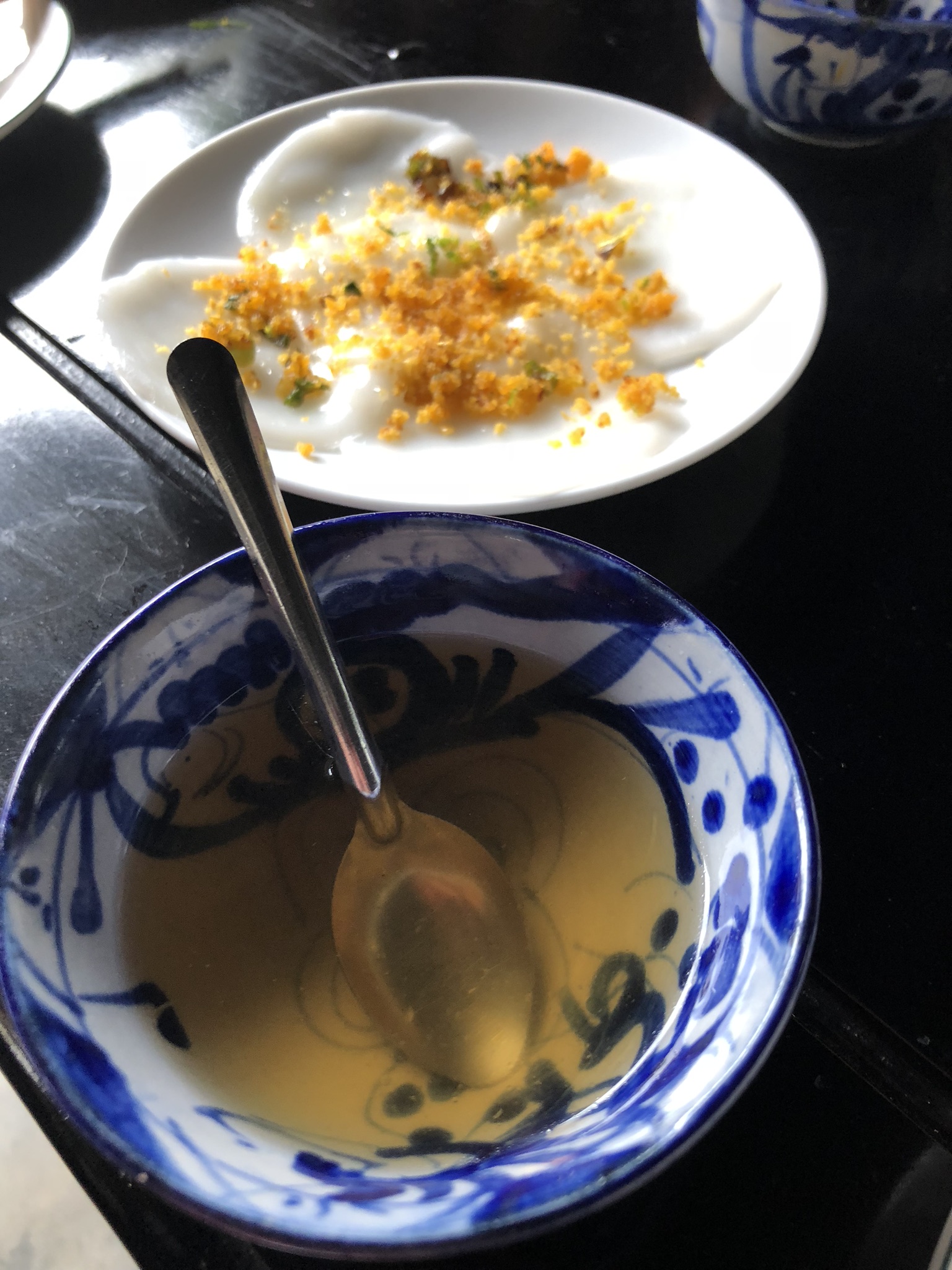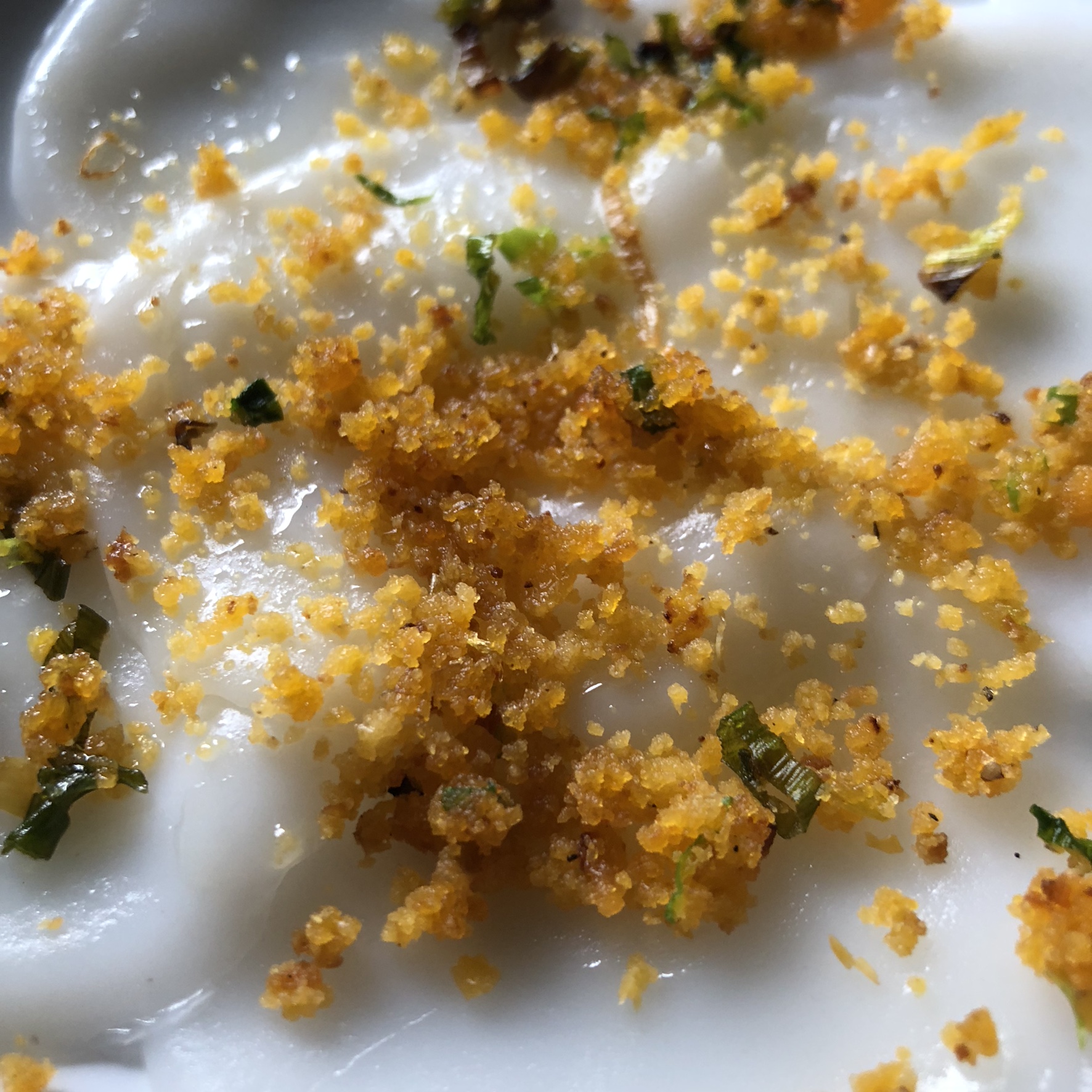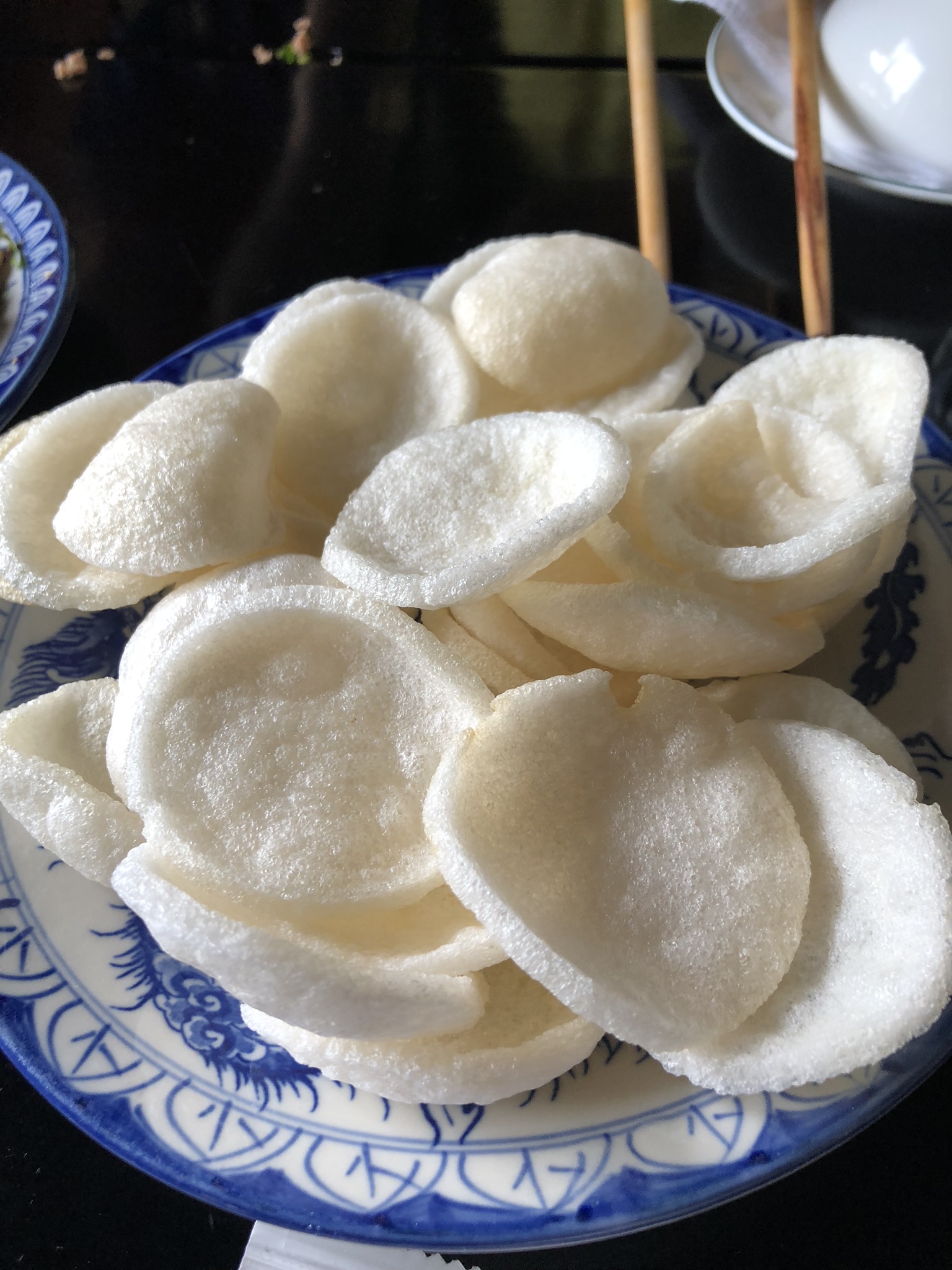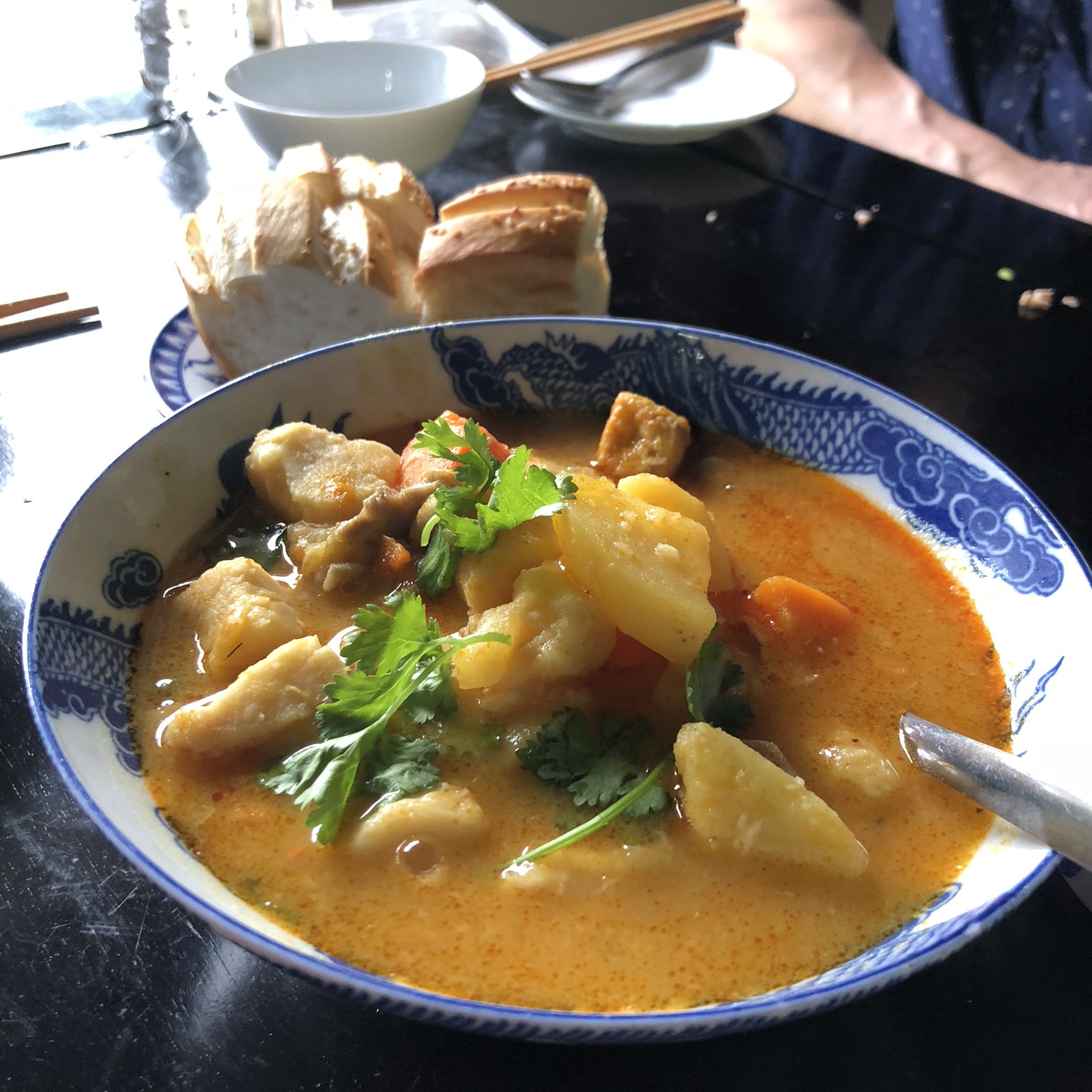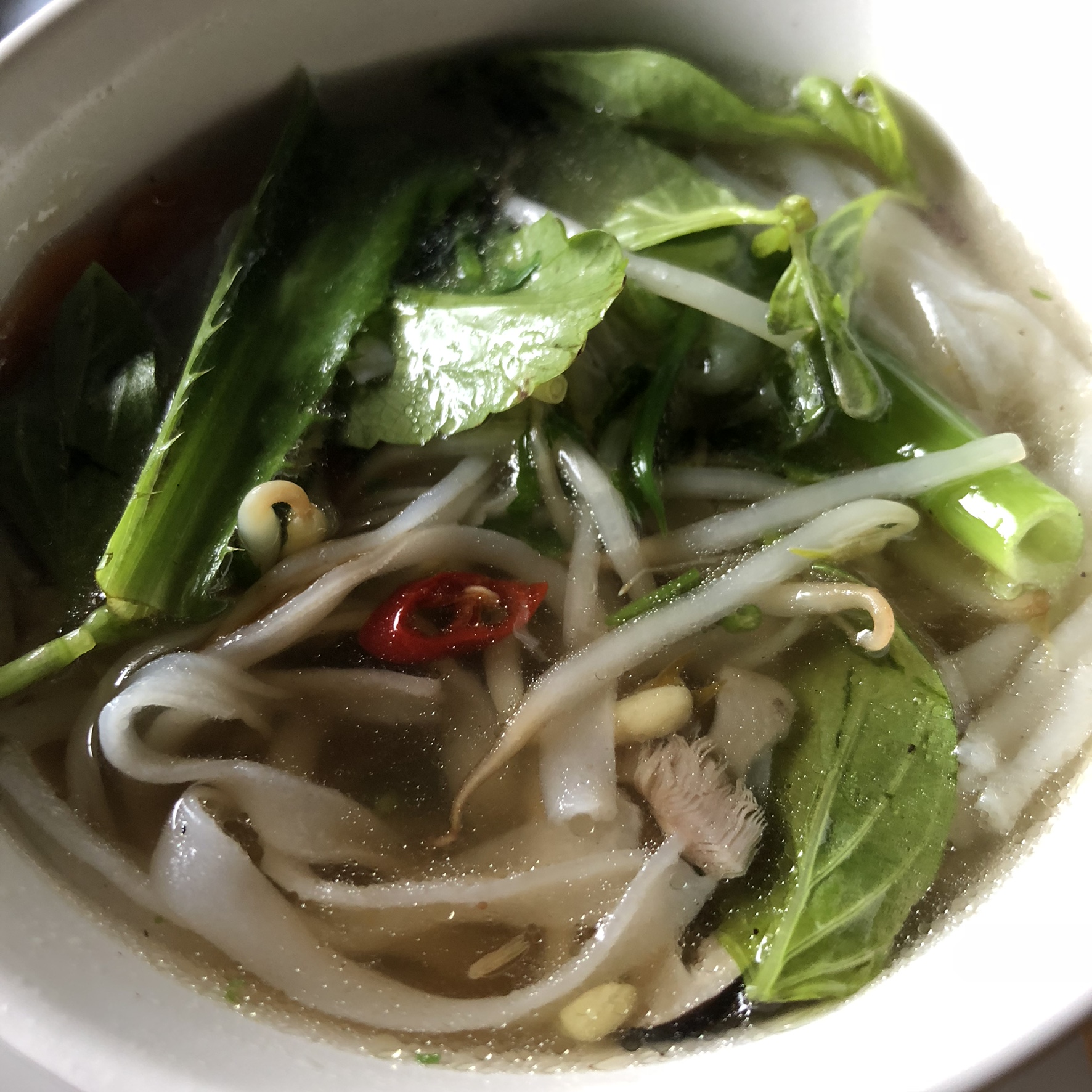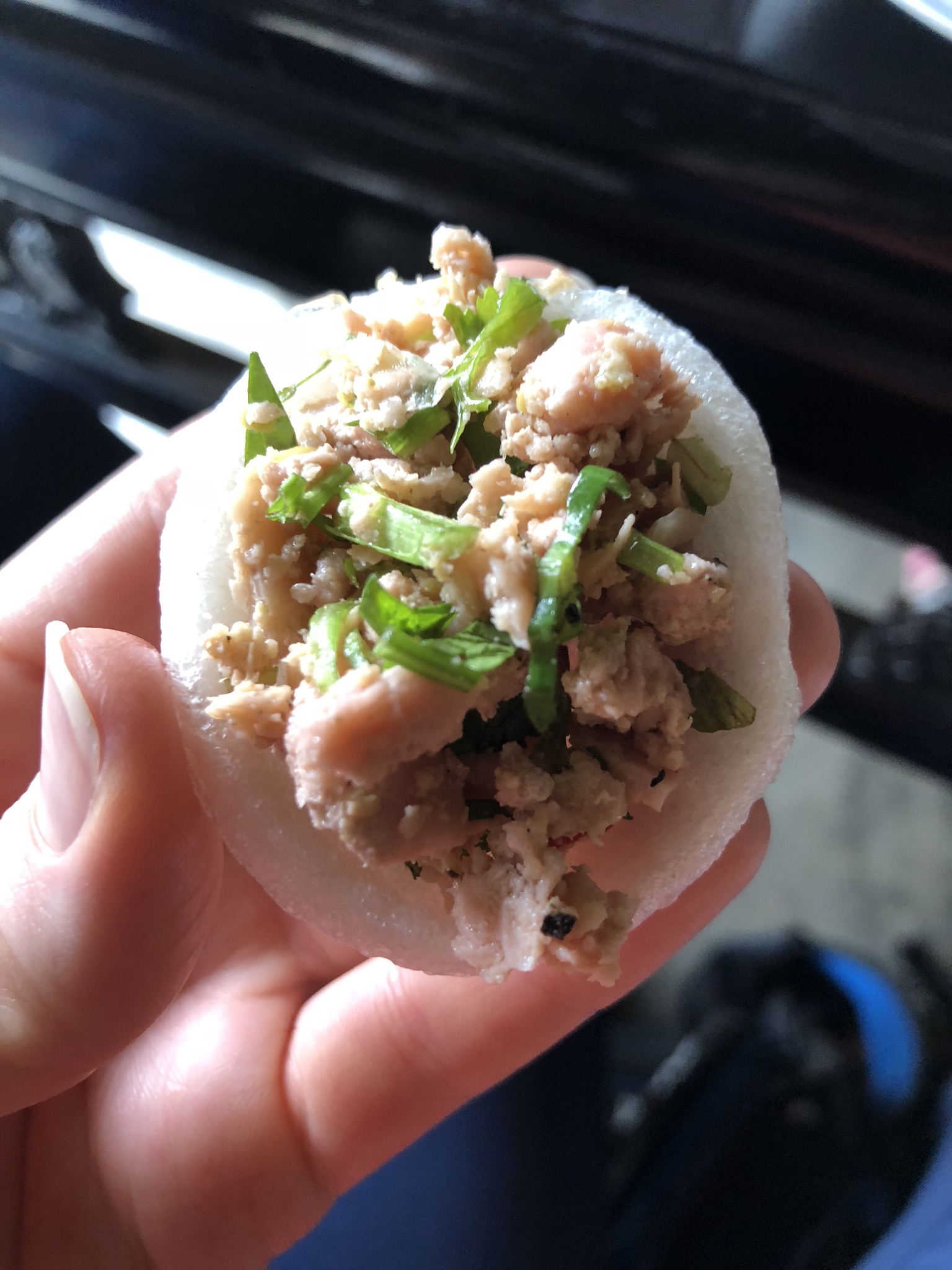Eat like a monk
My tour group stopped at a temple to eat lunch like monks do – vegetarian! Up until this point, our meals had revolved around pork, beef, chicken, or seafood. Although I love meat, I was eager to see the monks make produce the star of the show. Per usual, we were in for a multi-course feast.
First up, the appetizer - jackfruit and prawn crackers. Despite the name, these crackers were shrimp-free. Just tapioca flour, water, and salt made up these wonderfully light and crispy vehicles for the main attraction: jackfruit.
I’d heard of jackfruit but never tried it. However, I’d heard it allegedly mimicked meat. Yeah right I thought skeptically. The funny thing was, it did remind me of canned tuna! You know how chunked light tuna packed in water flakes apart when you stick a fork in it? Jackfruit flakes in the same way. Its texture was similarity meaty and toothsome, but without tuna’s fishiness. So weird. So surprisingly good. With a bit of cilantro sprinkled on top, I was allllmost convinced it wasn’t actually fruit.
Next up was a delicious vegetarian pho. Again, I was a bit skeptical. After all, I’d already sampled the best chicken phở of my life in Hanoi. I’d dubbed it perfection in a bowl (until I tried bún bò Huế, of course). How could this soup be better? I was convinced that vegetables could not comprise a broth with the same level of depth and intrigue. Again, I was pleasantly surprised.
Rather than deep and hearty like beef phở, the vegetarian phở was light and layered. Meaty mushrooms formed the base, carrots added sweetness, mung beans gave crunch, and chili slivers offered a punch of heat. A piece of cooked morning glory (similar to spinach) added brightness and a burst of color. And, as always, the rice noodles were on point. Nothing about this broth was boring. Finally, I started to get excited about our meal.
The next dish was my favorite and also the simplest. Rice cakes topped with soybean crumble. It was basic, but prepared to perfection.
The rice cakes rested on the plate like five little white moons. Atop this pristine, white canvas was a sprinkle of crispy soybeans, as yellow as egg yolks. To finish, was a sauce made from sugar, salt, water, and pineapple. With chopsticks, I plucked one of these “leaves” from the plate and, just like sealing an envelope, folded it into a half-moon and popped it in my mouth.
The textures were just right. The rice cake felt like biting into al dente pasta. In contrast, the crumble was a shower of salty, crunchy shards. Like leftover potato chips at the bottom of a chip bag (which are underrated, in my opinion). And, upon biting into a folded rice cake, the sauce released a punch of tangy liquid. Yes, it looks simple. But texturally, this dish was the most fun to eat.
Our fourth dish was a hearty, comforting stew made of chunky potatoes, carrots, and fried tofu. The sauce was savory and satisfying. We mopped up the last bits of sauce with soft bread.
Last but not least we chowed down on fried rice. Glistening with oil and studded with bits of mushrooms, carrots, and green onions, this dish proved that Vietnam’s vegetarian food could be every bit as satisfying as its meat-centric dishes.
Why did I ever doubt the temple chef could make a stellar lunch? Perhaps because I imagined monks eat lukewarm gruel three times a day. This meal was anything but. It was light yet satisfying, flavorful and varied. Vietnamese temple cuisine certainly isn’t lacking.
That night, I re-watched the excellent Netflix episode on Jeong Kwan, a Zen Buddhist nun who proves that food and spirituality go hand in hand. Although Korean temple cuisine and my Vietnamese meal differ, both serve as reminders that the absence of meat doesn’t mean an absence of flavor. In omitting meat, the meal shifted the focus to plants, and opened up a whole new realm of cooking possibilities.
Food, like music, fashion, painting, or any creative medium, benefits from a diversity of perspective. Vietnamese temple cuisine treats plants with ingenuity and reverence.








